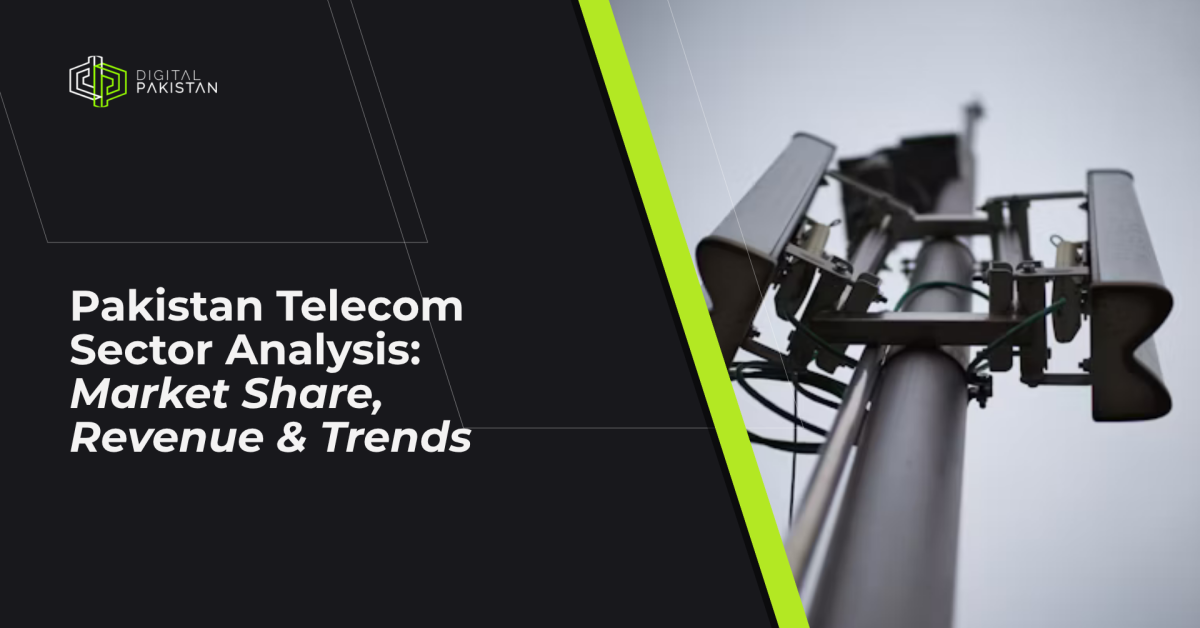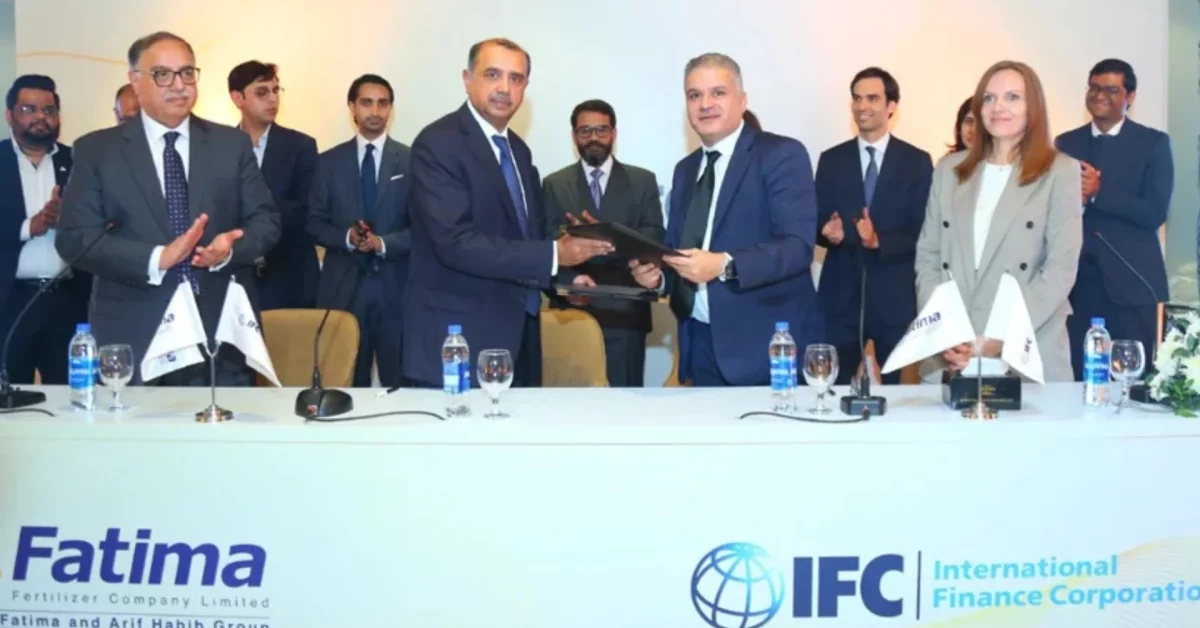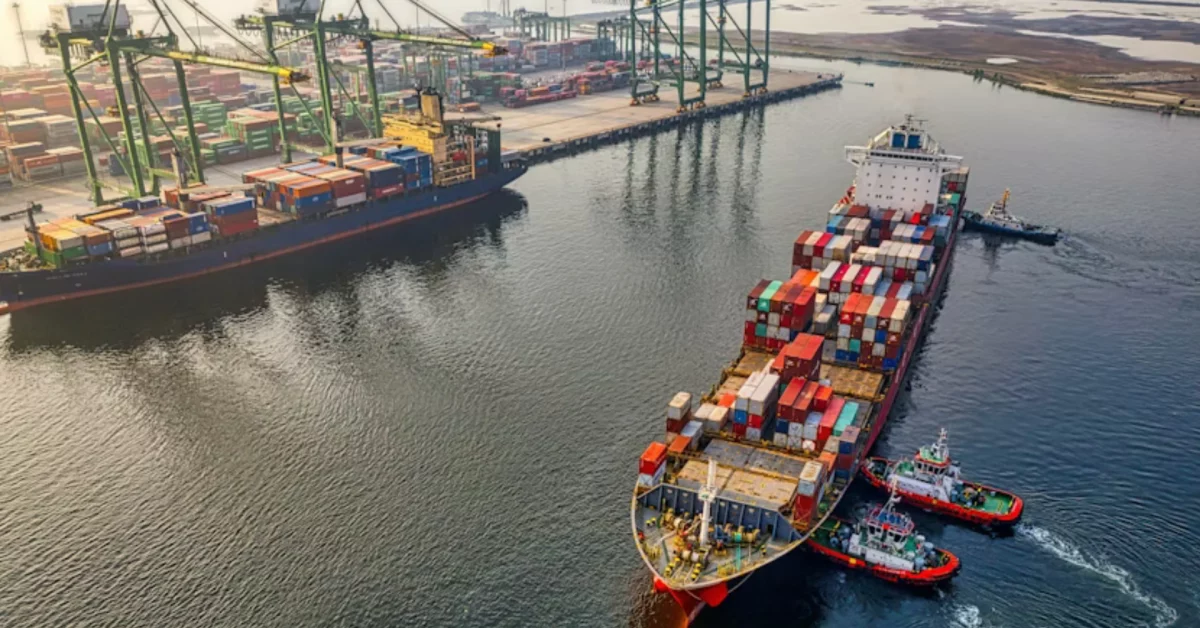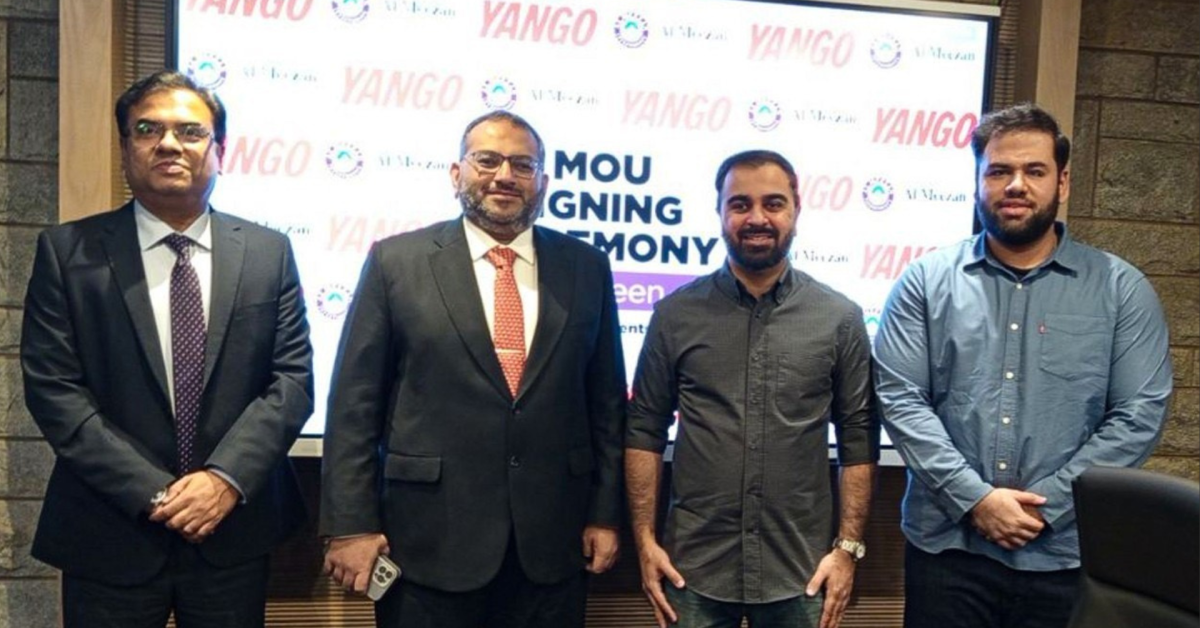
Pakistan and Russia Strengthen Media and Cultural Cooperation
October 20, 2025
Telenor Introduces WhatsApp-Based SIM and Bundle Service
October 21, 2025Introduction
Looking at Pakistan, Bangladesh and India tech comparison data, Pakistan’s telecom sector tells an interesting story. We’ve got around 192 million mobile users packed into a market dominated by four major players who’ve been locked in a price war for years. The industries at a turning point and 5G is finally (maybe) happening, two major operators are merging, and digital-only telcos are trying to shake things up. It’s messy, competitive, and honestly kind of fascinating if you’re into this sort of thing.
Understanding the Pakistan telecom market landscape
The Pakistan telecommunication sector has evolved from basic voice calls to a complex digital ecosystem. But let’s be real: infrastructure gaps, regulatory headaches, and razor-thin margins make this a tough business.
Market size and growth trajectory
As of July 2025, Jazz holds 37.15% market share, followed by Zong at 26.36%, Telenor at 21.83%, and Ufone at 13.67%. That’s roughly 192 million subscribers split between four operators in a market that’s mostly saturated. The Pakistan telecom industry generates serious revenue that is valued at $4.52 billion in 2025, but growth is slowing as the market matures. Most people who want a phone, already have one.
Regulatory environment and PTA oversight
The Pakistan Telecommunication Authority (PTA) manages licensing, spectrum allocation, and quality standards. They’re navigating a tricky balance, encouraging competition while dealing with operators who complain about dollar-denominated spectrum fees and heavy taxation. The regulatory environment directly impacts how quickly new technologies like 5G actually launch.
Pakistan telecom market share by operator
The competitive dynamics are shifting fast, especially with consolidation on the horizon.
Jazz dominates with 37% subscriber base
As of August 2025, Jazz has 73 million subscribers with 55 million on 4G, giving it the highest market share at 37%. Jazz market share leadership comes from decades of network investment, the JazzCash mobile money platform, and aggressive marketing. They’re owned by VEON and operate over 14,000 active cell sites with over 25,000 kilometers of fiber-optic cables.
Zong’s aggressive expansion strategy
Zong Pakistan sits at 26.36% market share with around 50 million subscribers. Supported by China Mobile’s strong financial resources, they’ve competed hard on data pricing and 4G infrastructure. Their strategy has been straightforward and that includes to build coverage, price aggressively, and grab subscribers.
Telenor and Ufone’s competitive positioning
Telenor‘s market share has declined from 22.83% in September 2024 to 21.83% in July 2025, showing steady erosion. Ufone subscribers account for 13.67% market share. Both have struggled against better-funded competitors, which is why they’re merging.
Emerging players and market consolidation
The PTCL Telenor merger is the biggest story here. With Ufone and Telenor combined, their joint market share stands at around 32.8%, closer to Jazz. This consolidation reduces the market from four to three major players, which should improve profitability but might reduce competitive pressure.
Revenue analysis of Pakistan telecom market
Revenue growth is happening, but margins are getting squeezed.
Industry revenue hitting $4.52 billion in 2025
The Pakistan Telecom Industry, valued at $4.52 billion in 2025, is projected to exhibit a CAGR of 3.28% from 2025 to 2033. That’s moderate growth in a mature market. The real action is in the revenue mix shifting from voice to data.
Data services driving over 51% of total revenue
Data and internet services captured a 51.79% revenue share of the Pakistan telecom market in 2024. Voice revenue has officially been surpassed. Data services Pakistan now dominates because everyone’s streaming videos, using social media, and working online. This shift forced operators to completely rebuild their business models.
ARPU trends across operators
Telecom ARPU Pakistan is painfully low, Jazz leads with the highest ARPU of Rs353.8, which converts to roughly $1.25. That’s brutal by global standards. Unlimited data bundles and intense price competition have commoditized services. Operators compensate with volume, but it’s a tough way to make money.
Mobile vs fixed-line revenue breakdown
Mobile dominates everything. Fixed line is basically irrelevant outside major cities. Mobile broadband Pakistan is where the action is, with users preferring the flexibility of cellular over wired connections.
Digital transformation reshaping Pakistan telecom market
Operators are seeking to transform beyond mere data carriers.
Jazz’s AI initiatives and digital services
Jazz completed its nationwide 3G switch-off in November 2024, freeing 900 MHz and 2100 MHz blocks for 4G. They’re investing in AI and digital services to differentiate beyond basic connectivity. JazzCash gives them a financial services revenue stream that other operators envy.
ONIC launches as Pakistan’s first digital-only telco
ONIC launched in Pakistan a year ago in partnership with Pak Telecom Mobile Ltd (PTML), quickly emerging as one of the fastest-growing telco brands for digital natives. It offers 100% digital payment experience with PIN-less wallet journeys, auto-renewal options, and seamless digital payment processes. They’re targeting young, tech-savvy users who never want to visit a physical store.
ROX enters as lifestyle-focused mobile brand
Jazz confirmed that Rox is the company’s attempt at launching a digital brand, offering a fully digital journey as a lifestyle brand with partnerships with foodpanda, Bookme, and Golootlo. This is Jazz’s reply to ONIC, proof that the digital-only model is here to stay.
Mobile financial services expansion
JazzCash and EasyPaisa have become essential infrastructure for millions of Pakistanis. When your telecom operator is also your bank, that’s serious ecosystem power and a hedge against commoditized connectivity services.
5G rollout transforming connectivity
5G is coming… eventually.
Commercial launch timeline and delays
The Ministry of IT and Telecom announced a detailed timeline for launch of 5G services in Pakistan, targeting June this year as the official rollout date. However, the PTA Chairman confirmed the 5G spectrum auction will take place before June 2025, with a commercial rollout expected by late 2025 or early 2026. Translation: don’t hold your breath for June.
Spectrum allocation across frequency bands
The auction will cover 3500 MHz, 2600 MHz, 2300 MHz, and 700 MHz spectrum bands. These frequency bands will determine coverage and capacity. The auction structure and pricing will massively impact which operator leads 5G deployment.
Infrastructure investment requirements
The upcoming 5G rollout, valued at USD 831.8 million, unlocks significant investment. That’s serious money for new base stations, fiber backhaul, and core network upgrades. In a low-ARPU market, operators are rightfully nervous about returns.
Expected impact on market dynamics
5G could differentiate operators or become another feature in the commoditization race. MergeCo is expected to prioritize network integration, cost savings redirected into 4G densification and 5G readiness. The merged PTCL-Telenor entity might actually have the scale to compete effectively.
Key trends driving Pakistan telecom market growth
Several forces are reshaping the competitive landscape.
Enterprise and B2B solutions expansion
Consumer connections held 81.79% of the Pakistan telecom market size in 2024, while enterprise subscriptions are expanding at a 4.71% CAGR. B2B offers better margins than consumer services. Smart Pakistan mobile network operators are building dedicated enterprise divisions.
IoT and M2M connectivity services
IoT and M2M services are advancing at a 4.30% CAGR through 2030. Industrial automation, agriculture monitoring, and fleet management all need connectivity. This is real business beyond consumer smartphones.
OTT platforms disrupting traditional models
WhatsApp killed SMS. Zoom murdered international calling revenue. Operators have accepted this reality and are trying to partner with OTT platforms rather than fight them.
Rural broadband and digital inclusion initiatives
4G penetration Pakistan is expanding beyond cities, though coverage gaps remain massive. Universal Service Fund projects help, but building infrastructure in low-density areas still doesn’t make economic sense without subsidies.
Challenges in Pakistan telecom market
Real talk about what’s holding the sector back.
Infrastructure gaps in underserved regions
Large parts of Pakistan remain poorly connected or completely offline. The business case for rural coverage is weak, creating persistent digital divides.
Regulatory and licensing complexities
Unresolved legal matters surrounding spectrum allocation are significant roadblocks, with cases related to 2600 MHz, 2100 MHz, and 1800 MHz bands pending in courts. Regulatory uncertainty makes long-term planning difficult.
Price competition eroding margins
The race to the bottom on pricing is unsustainable. When operators compete only on price, nobody wins except consumers getting temporarily cheap services. This dynamic makes network investment harder to justify.
High taxation impacting profitability
Dollar-denominated spectrum fees, energy-price inflation, and cyber-security compliance costs weigh on margins. Multiple taxation layers make Pakistan’s telecom sector one of the most heavily taxed globally.
Strategic developments shaping the market
Major deals are redrawing the competitive map.
PTCL-Telenor merger creating three-player market
The proposed PTCL-Telenor integration, financed by a USD 400 million IFC-led tranche, would merge Ufone’s mobile assets with Telenor’s 45 million customers and 13,000 towers. This consolidation should create a healthier competitive structure, though Zong has complained about market concentration.
$400 million IFC financing for network expansion
That IFC financing enables serious infrastructure investment. MergeCo combines the strengths of PTCL and Etisalat, leveraging PTCL’s fiber dominance to deliver faster backhaul and improved data speeds.
Cross-industry digital ecosystem collaborations
Operators are partnering with banks, e-commerce platforms, and tech companies. These collaborations position cellular market players as ecosystem orchestrators, not just connectivity providers.
Pakistan telecom market forecast through 2030
The telecom landscape in Pakistan is set to evolve rapidly by 2030 as operators embrace innovation, and next-generation connectivity.
3.28% CAGR growth projections
The market exhibits a CAGR of 3.28% from 2025 to 2033. That’s decent but not explosive, a sign of maturity. Growth comes from data consumption increases and digital services, not new subscriber additions.
Digital operator transformation strategies
Survival requires evolution. The best telecom operator in Pakistan by 2030 will be whoever builds the most valuable digital ecosystem beyond basic connectivity.
Investment opportunities and market potential
Despite challenges, Pakistan’s young, increasingly digital population creates genuine opportunities. Growth is fueled by increasing smartphone penetration, rising internet usage, and expanding adoption of mobile financial services.
Competitive landscape evolution
We can expect more mergers, new digital-only players, and a growing overlap between telecom, fintech, and tech firms. Over the next few years, how Pakistan manages the shift from 4G to 5G will shape who leads the market.
Conclusion
Pakistan’s telecom sector is at a crossroads. The PTCL-Telenor merger consolidates the market to three major players, potentially improving economics but reducing competition. 5G is finally coming (probably), though infrastructure costs and low ARPU make the business case challenging. Digital-only brands like ONIC and ROX are experimenting with new models. Data revenue has surpassed voice, forcing operators to completely rethink their approach.
The Pakistan telecom market share 2025 landscape shows Jazz maintaining leadership, but the merged entity could challenge that dominance. Challenges around taxation, spectrum allocation, and pricing pressure remain real. The sector’s $4.52 billion in revenue and 3.28% projected growth through 2030 suggest steady evolution rather than explosive expansion. For operators






